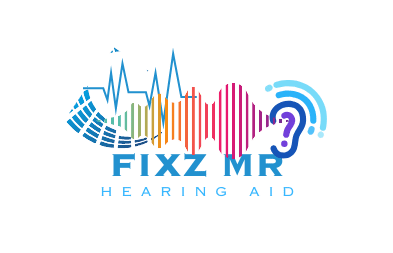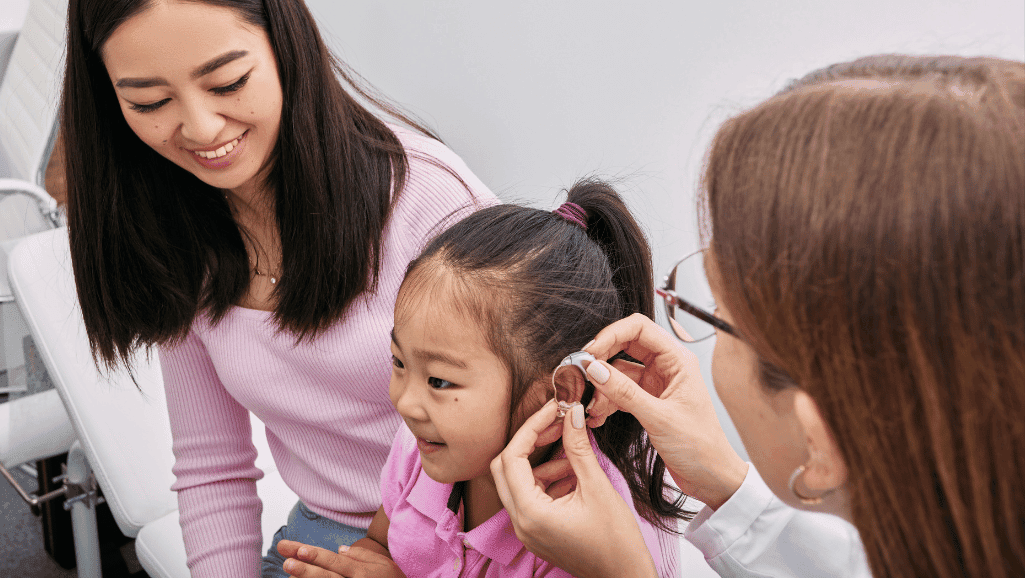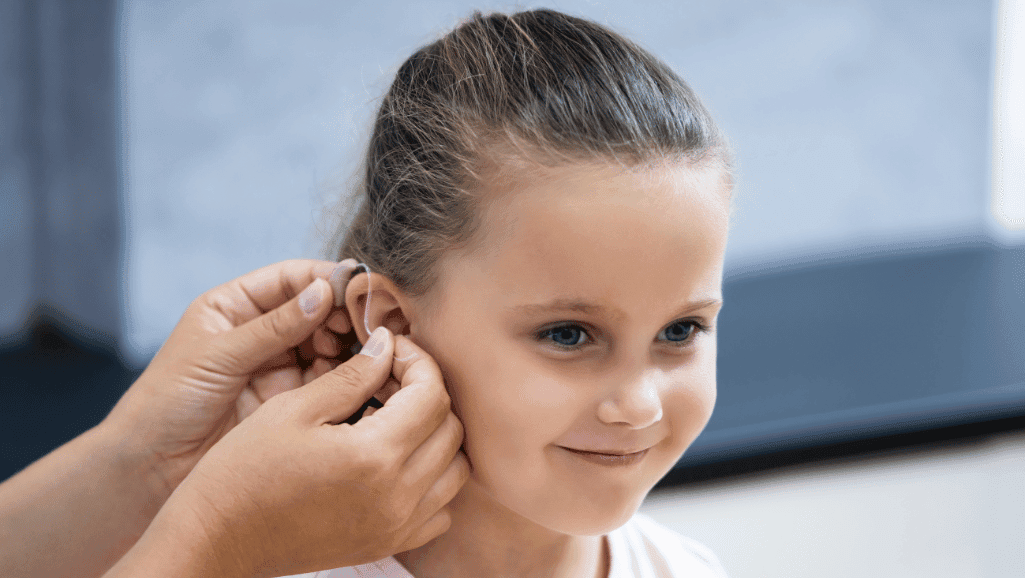The search for better ways to help people with hearing loss is a global effort. It affects millions worldwide. Emerging audiology treatments are changing how we approach hearing care. They aim to make communication easier and break down social barriers.
There are many reasons people lose their hearing, like getting older, damage from loud noises, or genetics. That’s why state-of-the-art audiology interventions are crucial. Latest innovations in audiology are showing promising results in early tests. They could lead to new treatments for people soon.
New cutting-edge hearing technologies are changing how we treat hearing loss. Gene therapy and stem cell treatments are being explored for hereditary deafness. Regenerative medicine is also making progress in treating sensorineural hearing loss, a tough condition to treat.
Telemedicine is changing how we interact with patients, making care more accessible. This shift shows the potential to greatly improve lives and bring back the joy of sound for many.
Key Takeaways
- Advanced therapies for hearing loss are revolutionizing treatment approachability and efficacy.
- Gene therapy offers new hope in addressing genetic hearing impairments, with proven efficacy in preclinical studies.
- Stem cell and regenerative medicine strategies are gaining ground, showing potential in restoring damaged auditory mechanisms.
- Technological enhancements in cochlear implants and hearing aids are increasingly catering to patient-specific requirements.
- Telemedicine catapults audiology into a more accessible realm, allowing patients to receive care regardless of their location.
- Collectively, these progressive treatments are paving the way for improved quality of life for individuals with hearing loss.
Understanding the Impact of Hearing Loss
Understanding hearing loss is more than just noting its rise. It means looking into advanced hearing care options. It affects people of all ages, often due to genes, the environment, or health issues. These factors lead to big challenges that old ways can’t handle.
The Prevalence and Causes of Auditory Impairments
Hearing loss affects everyone, showing up in many ways like conductive, sensorineural, or mixed types. It can come from earwax, middle ear fluid, or serious issues like acoustic trauma. This variety means we need new innovative hearing solutions for each person.
Challenges and Limitations of Traditional Hearing Solutions
Old ways to tackle hearing loss included hearing aids, cochlear implants, and assistive systems. These helped, but they didn’t always work well in noisy places or help with direction. They also needed regular adjustments and were expensive, leading to a call for better solutions.
Traditional methods had big limits, making new advances crucial. These new solutions aim to do more than just make sounds louder. They use advanced tech to improve sound quality and the listening experience. Breakthroughs in auditory therapy aim for a future where hearing aids help people fully connect with others.
As we learn more about hearing health, we see the need for better solutions. These solutions should help people live fully, not just hear sounds. This pushes the medical field to keep innovating, so everyone can hear and be heard.
| Traditional Hearing Aids | Advanced Hearing Devices |
|---|---|
| Basic amplification | High-definition sound processing |
| Limited directional capability | Dynamic directional microphones |
| Requires frequent manual adjustments | Automated settings and adaptability |
| Often noticeable and cumbersome | Sleek, discrete designs |
| No connectivity options | Wireless connectivity and integration with digital devices |
For affordable and easy-to-use hearing aids, look at Audien. They offer options for mild to moderate hearing loss. Their aids are budget-friendly, come with rechargeable batteries, and meet different needs and budgets.
Innovative Hearing Care Methods
The world of hearing care is changing fast, bringing new solutions that make hearing better and easier. Now, advanced hearing help combines old and new ways to make a big difference. This mix makes hearing care better for people.
From Aids to Implants: The Evolution of Hearing Devices
From simple hearing aids to advanced implants, we’ve seen a big change in hearing help. Today’s devices are easy to use and fit into daily life well. This change has greatly improved the lives of many with hearing loss.
Customizable Hearing Solutions and Personalized Care
Now, hearing aids can be made just for you. They’re designed based on your specific hearing loss. Plus, you can adjust them easily with technology, showing a new level of care.
| Feature | Improvement |
|---|---|
| Customization and Personalization | Devices tailored for individual ear canal shapes and hearing needs |
| Technology Integration | Incorporation of AI, Bluetooth, and remote programming |
| User Accessibility | Enhanced through intuitive design and user-friendly interfaces |
| Professional Support | Remote adjustments and support by hearing care professionals |
New audiology therapies are making hearing help better and more complete. The aim is to not just help with hearing but also with thinking and social life affected by hearing loss.
Breakthrough Hearing Technology: Transforming Lives
The evolution of breakthrough hearing technology goes beyond old devices. It changes how we think about hearing care with advanced hearing technologies. These technologies are key in making hearing better for people who have trouble hearing. They do this with new features and how they work together with other things.
New steps in modern hearing technology bring many new functions. These make talking and hearing clearer and improve life quality. For example, machines that learn can change how devices work based on what sounds are around. This means people can hear better in noisy places or where sounds echo.
Healthcare experts and companies like Lindus Health are working together. They’re bringing in new solutions that show how revolutionary audiology interventions can change things. Tools like otoacoustic emissions (OAE) and auditory brainstem response (ABR) tests make finding and fixing hearing problems faster and better.
| Technology | Description | Impact |
|---|---|---|
| Telemedicine | Remote access to audiology care | Expands service reach, particularly beneficial in rural areas |
| Big Data Analysis | Optimizes hearing aid features based on large-scale user data | Enhances personalized user experiences and device performance |
| Stem Cell Therapy | Regenerates hair cells in individuals with sensorineural hearing loss | Potentially restores natural hearing capacity |
| Bluetooth Integration | Wireless connectivity in hearing aids for streaming and communication | Improves user interfacing with various multimedia devices |
These big steps in modern hearing technology show how important it is to have hearing solutions that fit each person. They also show how advanced hearing technologies can change how people talk and live their lives if they have trouble hearing.
Gene Therapy: A Frontier in Auditory Restoration
Innovative hearing therapies are leading the way against hearing loss. Gene therapy is a key player in this field. It focuses on genetic hearing loss solutions. This method has a lot of promise for those with hereditary hearing problems.
Genetic Hearing Loss: Turning Research Into Reality
Gene therapy targets genes that cause hearing loss. Research says up to 120 genes might be linked to non-syndromic hearing loss. Some genes, like GJB2, are often found in cases of autosomal recessive non-syndromic hearing loss.
This therapy aims to fix these genes by adding corrective genes to cells. It could stop or even reverse hearing loss.
Success Stories: Animal Studies Leading the Way
Studies on animals, especially mice, show that gene therapy can improve hearing. These studies are crucial for human trials. They show the potential of novel hearing care approaches in making big medical advances.
For instance, research by Eli Lilly helped an 11-year-old who was born deaf. The therapy focused on otoferlin deficiency and improved his hearing in different sound frequencies after a month.
These treatments show how effective and life-changing gene therapy can be for severe hearing loss. It’s not just about hearing better. It’s about greatly improving life and connecting with the world.
| Study Focus | Research Group | Significant Findings |
|---|---|---|
| Otoferlin gene therapy | Eli Lilly | Significant improvement in hearing sensitivity and frequency range within one month post-treatment. |
| Genetic variants targeting | Various Global Teams | Identification and intervention in over 80 loci associated with autosomal dominant non-syndromic hearing loss. |
The world is looking forward to these new treatments. Adding gene therapy to regular treatments could greatly reduce the social and economic impact of hearing loss. Research is showing the huge potential of gene therapy in improving hearing health. It could lead to a future where genetic hearing problems are managed or even cured.
Stem Cell Therapy: The Promise of Regeneration
Stem cell therapy for hearing loss is a new hope in cutting-edge audiologic solutions. It could change how we treat hearing loss, which affects about 40 million American adults and many children worldwide. Traditional hearing aids just make sounds louder, not fix the damage inside the ear. So, new solutions like innovative solutions for hearing loss are crucial.
Stem cell therapy for hearing loss is inspired by how some animals can regrow their hearing cells. Humans can’t do this naturally, but scientists are working to help us. They study how to make humans regrow these important cells, as seen in global research.
How Stem Cells Can Revolutionize Inner Ear Treatments
Studies on the inner ear show that stem cells can turn into new hearing cells. These cells are key for hearing by changing sound waves into signals for the brain. This could lead to new treatments for severe hearing loss, beyond what cochlear implants can do.
Animal Studies: Paving the Path for Human Application
Animal studies are crucial for making stem cell therapy for hearing loss a reality. In animals like guinea pigs, rats, and mice, stem cells have shown promise. These studies help us understand how to use stem cells for different types of hearing loss. They also prepare us for human trials, offering hope for new treatments.
| Study Focus | Animal Model | Outcome | Year |
|---|---|---|---|
| Hair Cell Regeneration | Guinea Pigs | Positive cell differentiation | 2018 |
| Neural Regeneration | Mice | Increased neuron density | 2020 |
| Sensory Cell Recovery | Rats | Improved hearing function | 2022 |
This research proves that regenerative hearing care is possible with stem cell technology. It shows how important stem cells are in today’s medicine. With ongoing research, this method could change how we treat hearing loss completely.
Emerging Audiology Treatments and Modern Interventions
In the fast-changing world of audiology, novel approaches in audiology are changing how we treat hearing and balance issues. These new methods and AI are bringing big changes, making hearing care better than ever before.
AI-powered hearing aids are a big step forward. They make sounds clearer and adjust to your environment for a better listening experience. This shows how advanced technology is making hearing aids more effective and easy to get.
Teleaudiology is also making hearing care better by making it easier to get. Now, people can get top-notch care from home, overcoming old barriers like distance and getting around.
| Advancement | Impact | Technology Used |
|---|---|---|
| AI Hearing Aids | Improves sound quality and noise-handling | Artificial Intelligence |
| Teleaudiology | Expands access to care | Internet-based Communication |
| Regenerative Medicine | Potential restoration of natural hearing | Stem Cell Research |
| Genetic Testing | Early detection and personalized management plans | Genomic Analysis |
Looking into regenerative medicine and gene therapy could change everything. These cutting-edge audiology advancements might help fix hearing naturally with stem cells and genetic changes. This could change treatment plans and give hope to those with hearing loss.
Technologies like AI, telemedicine, and regenerative therapy are all working together to help hearing-impaired people. By focusing on what each person needs, we can make hearing care better and more effective.
As we keep improving these treatments, the future of audiology looks bright. With each new discovery, we could change lives and make hearing health care better for everyone.
Regenerative Medicine: A Leap Toward Healing Hearing
Regenerative medicine in audiology is a big step forward in treating hearing loss. It uses new hearing therapies and ways to fix auditory cells. This approach aims to improve hearing and set new standards for treating hearing loss.
Advancements in Cell Regeneration for Sensorineural Hearing Loss
Regenerative medicine has made big strides in treating sensorineural hearing loss. It focuses on fixing sensory hair cells that are crucial for hearing. These cells get damaged often in people with sensorineural hearing loss. New treatments use growth factors and stem cells to help these cells grow back.
Growth Factors: Potential for Auditory Nerve Cell Growth
Growth factors are key in regenerative medicine for hearing. They help grow auditory nerve cells. This helps restore basic hearing and improves how sounds are perceived by the brain. These advances could lead to new hearing therapies soon.
| Country | Biotech Companies | Focus Area |
|---|---|---|
| USA | 24 | Otoprotection, Regeneration, Tinnitus, Balance, Auditory Processing |
| France | 4 | Regeneration, Otoprotection |
| Germany | 4 | Tinnitus, Balance |
| Switzerland | 3 | Central Auditory Processing |
Telemedicine: A New Era of Audiology Accessibility
Telemedicine in audiology is changing how we get audiological care. It uses technology to make hearing care easier to get. This is great news for people with hearing problems all over the world.
New tech has made remote hearing care services possible. Now, people can get check-ups and advice from anywhere. This is especially good for those living far from big cities. Studies in Int. J. Audiol. 2020 show how telemedicine can help more people get hearing aids.
The American Speech-Language-Hearing Association (ASHA) says telepractice is a good way to get care. They give rules and help to make sure it works well. This shows that telemedicine can give good audiological care from afar.
Research in JAMA Otolaryngol. Head Neck Surg. 2018 links hearing loss to brain health. This means we need to make sure everyone can get the care they need. Teleaudiology is a big help in making sure of this.
The latest Philips hearing aids show how tech can help us manage our hearing care. They let users change settings on their own. This shows how telehealth and new tech can work together for better hearing care.
| Year | Global Hearing Loss Prevalence |
|---|---|
| 1990 | Reported by Global Burden of Disease Study |
| 2019 | Increased prevalence and impact recorded by Bull. World Health Organ. |
We need more research on telemedicine in audiology. Hearing loss is a big health issue worldwide. Using innovative hearing care methods is a big step towards making healthcare more inclusive. Teleaudiology helps people who are hard to reach and is useful when seeing a doctor in person isn’t possible.
Advanced Hearing Technologies and Improved Quality of Life
Exploring modern audiological interventions shows us how new tech like high-tech hearing aids and novel approaches to hearing loss are changing lives. These enhanced hearing devices have many new features. They meet the complex needs of users, combining performance and convenience in ways we couldn’t imagine before.
Directional Microphones and Noise Reduction Innovations
Today’s hearing aids often have directional microphones. These focus on sounds in front of the user, making speech clearer in noisy places. They adjust the signal-to-noise ratio and cut down on background noise, helping with communication in social situations.
Advanced noise reduction tech uses new algorithms to block out unwanted sounds. This makes speech clearer, listening more comfortable, and helps avoid hearing fatigue. These are key for keeping hearing healthy.
Beneficial Features of Modern Hearing Aids
Modern high-tech hearing aids come with enhanced digital connectivity. They can connect wirelessly to devices like phones, offering a better audio experience. This lets users stream music, calls, and other sounds directly into their hearing aids without losing quality.
These aids also have tinnitus masking features to help with tinnitus symptoms, making life more comfortable. Features powered by AI and ML, like adaptive volume controls and custom sound settings, make hearing even more personalized.
For more info on the latest in-ear hearing devices and their benefits, visit Jabra Enhance hearing aids.
The mix of novel approaches to hearing loss and modern audiological interventions is changing lives. It’s making everyday interactions and special moments clearer and more meaningful. Enhanced hearing devices are opening a door to a world of better sound.
Conclusion
The future of hearing health is a pressing concern, with a growing number of people facing hearing loss. By 2050, it’s expected that 900 million people will have disabling hearing loss. This, along with the annual cost of unaddressed hearing issues, highlights the need for action.
Early and innovative intervention is key, especially since mild hearing loss is much more common than severe cases. Hearing problems not only make communication harder but also lead to a significant loss of quality of life. They are the top cause of disability, with no cure in sight.
However, there is hope with revolutionary approaches to hearing health. Cutting-edge audiologist services are using new technology to improve diagnosis and treatment. This includes Bluetooth, AI, and rechargeable batteries in hearing aids, making life easier for patients.
Also, state-of-the-art hearing treatments like gene and stem cell therapy are being explored. These could lead to new ways to restore hearing. Tele-audiology is also helping people in remote areas get the care they need, making audiology more accessible to everyone.
These new methods and technologies show great promise for improving lives. They aim to tackle tinnitus and other hearing issues, offering a brighter future. With ongoing research and collaboration, audiology is set to expand, making hearing loss less of a barrier in the future.
FAQ
What are some of the latest innovations in audiology?
How does hearing loss impact an individual’s life?
What are the limitations of traditional hearing solutions?
How have hearing devices evolved over time?
What breakthroughs has gene therapy provided in treating hearing loss?
What is the role of stem cell therapy in treating hearing loss?
What new audiology treatment methods are being developed?
How does regenerative medicine aid in treating sensorineural hearing loss?
How is telemedicine impacting audiology services?
What are some advanced features found in modern hearing aids?
What are some future developments expected in audiology care?
Source Links
- Advances In Hearing Loss Treatment And Technology – Audiology and Hearing Aid Services, LLC – https://ahassavannah.com/advances-in-hearing-loss-treatment-and-technology/
- Recent Developments in Hearing Technology – https://www.news-medical.net/health/Recent-Developments-in-Hearing-Technology.aspx
- Monitoring and follow-up – Hearing loss in adults – https://www.ncbi.nlm.nih.gov/books/NBK536544/
- Unlocking the Future of Hearing Health: Understanding and Managing Sudden Hearing Loss – Audiology Central – https://audiologycentral.com/unlocking-the-future-of-hearing-health-understanding-and-managing-sudden-hearing-loss/
- 20Q: Social and Emotional Impacts of Hearing Loss—Empowering Audiologists – https://www.audiologyonline.com/articles/20q-social-and-emotional-impacts-28651
- Exploring the Spectrum of Hearing Loss Treatments: Your Guide to Making Informed Decisions – https://allisonaudiology.com/patient-resources/exploring-the-spectrum-of-hearing-loss-treatments-your-guide-to-making-informed-decisions/
- 3 ways Phonak is advancing hearing healthcare to promote healthy aging | Audiology Blog – https://audiologyblog.phonakpro.com/3-ways-phonak-is-advancing-hearing-healthcare-to-promote-healthy-aging/
- The Future of Hearing Health: Advancements and Innovations – https://aanviihearing.com/blogs-on-hearing-health/the-future-of-hearing-health-advancements-and-innovations-aanvii-hearing
- Lindus Health – https://www.lindushealth.com/blog/the-future-of-hearing-aid-devices-exploring-the-latest-breakthroughs-in-technology
- The Future of Hearing Aid Technology – https://www.ncbi.nlm.nih.gov/pmc/articles/PMC4111503/
- Recent Therapeutic Progress and Future Perspectives for the Treatment of Hearing Loss – https://www.mdpi.com/2227-9059/11/12/3347







